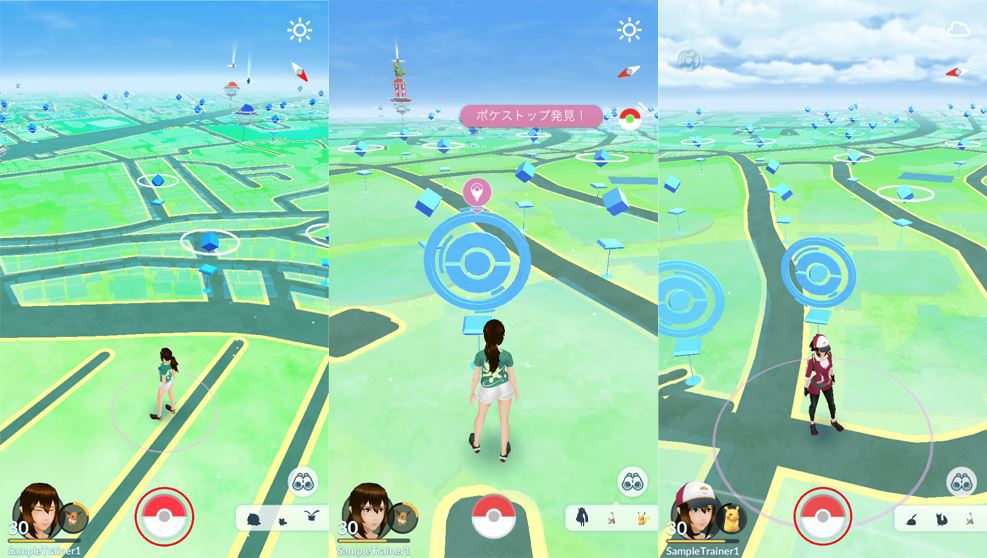Publication date of the original Japanese article: 2021-09-08 20:18 (JST)
Translated by. Braden Noyes
Pokémon GO, the popular location-based game, has a problem when it comes to malfunctions related to location data, and it would seem this flaw has become somewhat of a hot topic among players.
Pokémon GO is an augmented reality (AR) game designed for mobile devices which utilizes a player’s actual physical location. By moving around in the real world, the player’s avatar can approach and interact with various things in the game such as Pokéstops and Pokémon.
The game does this by using GPS technology to determine the player’s physical location. It’s the same technology used by map applications. In other words, a player’s movements in the real world directly correlate to their avatar’s position on the map within the game.
However, anyone who has played the game has most likely had the experience of seeing their avatar moving in the game despite the fact they are physically standing still. This malfunction is a result of something called GPS drift, a phenomenon which results when GPS data is interpreted incorrectly.

GPS drift is an unavoidable side-effect when it comes to location-based games. Posts mentioning this phenomenon have been receiving quite a bit of attention among the /r/pokemongo Reddit community. User scusie__ reports that her Pokémon GO avatar suddenly started acting strangely after she moved to the 34th floor of a high-rise building. Despite being in her living room, her in-game avatar wanders back and forth across the city. She claims it’s enough to hatch a 2km egg in around 10 minutes, which is supposed to require players to physically walk a distance of two kilometers.
With a bit of math, this works out to a steady speed of around 12 kph, which is faster than a typical jogging speed. Pokémon GO does have a built-in speed limit, however, which users have estimated to be around 10 kph. This was implemented shortly after the game’s release to both prevent players from cheating the system and simply driving around to hatch eggs, as well as to help users stay safe by keeping them off their phones while driving.
This does mean, however, that you can’t actually hatch a 2km egg in less than 10 minutes. We’re going to give scusie__ the benefit of the doubt, though, and assume she’s simply exaggerating the time it takes a bit due to the excitement of being able to hatch eggs without ever leaving her living room.
Many users left comments in the thread sharing their own experiences of their avatars moving sporadically despite being at home. One user who lives in a converted basement says they’re forced to continually tap the “I’m a passenger” message even though they’re simply relaxing on the couch. This is most likely due to incorrect GPS data causing the game to think the player is travelling faster than the preset speed limit mentioned earlier.
There are also comments from other users who say GPS drift is a fairly common occurrence in tall buildings. One of the major causes of GPS errors is signal interference due to the buildings themselves. This certainly seems to be the case, as experience has shown that in-game avatars tend to act up and move around more sporadically when playing in areas surrounded by tall buildings. The Reddit thread is also full of users explaining methods that can be used to purposefully cause GPS drift as well as discussions on the pros and cons of doing so.

There are a number of different methods and algorithms that are used to process GPS data, but the process essentially involves a receiver which gathers data on a satellite’s current position and the time of origin of the radio transmission being received. This data is collected from multiple GPS satellites which the receiver—in this case, the player’s device—then uses to calculate its exact location on the Earth.
Using GPS has become such a part of everyday life that most people never even stop to think about just how advanced the technology actually is. For starters, you’ve got electromagnetic radio waves zipping to and from space at the speed of light.
Accurately calculating the time it takes something travelling that mind-bogglingly fast to go from a satellite to your device in order to measure the exact physical distance between the two requires incredibly precise calculations. The device must also do this simultaneously with multiple satellites in order to triangulate its location. And that’s before you even start taking into consideration all the other factors that play a part such as the rotational speed of the Earth and the effects the various layers of the atmosphere have on radio waves.
In other words, that convenient little GPS device you’re constantly carrying around in your pocket is actually an incredible feat of human engineering. Due to its precise nature, however, even the slightest change to the way radio signals behave can have a big effect on a device’s ability to accurately calculate a player’s location.
The developer of Pokémon GO, Niantic, have banned the altering of GPS location for the purposes of cheating. However, while their terms of service prohibit “the use of any techniques to alter or falsify a device’s location,” it is unclear whether or not purposefully trying to induce GPS drift constitutes a violation.
Regardless, the fact remains that some users seem quite happy at being able to hatch eggs from their living room, while others continue to get frustrated at never knowing when or if their avatar will start acting up due to poor GPS signal, resulting in the game’s speed limit preventing them from playing. Whether you find it interesting or just plain annoying, this phenomenon seems to be unique to location-based games. Instead of hoping for an intentional location malfunction, however, it seems much more sensible to find an outdoor activity such as taking a walk that you can enjoy.





